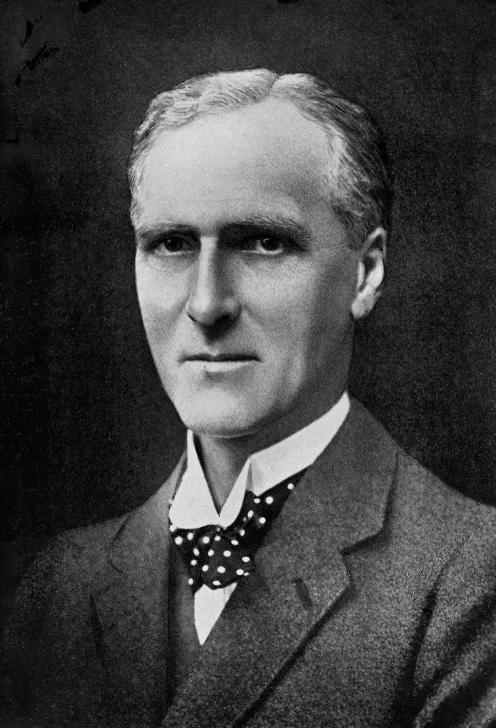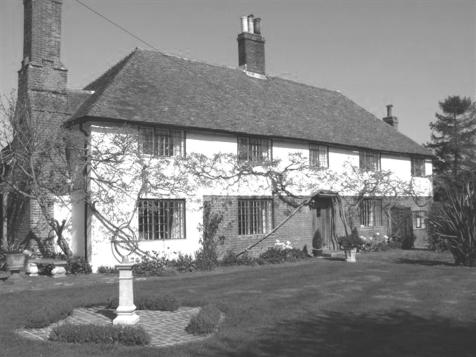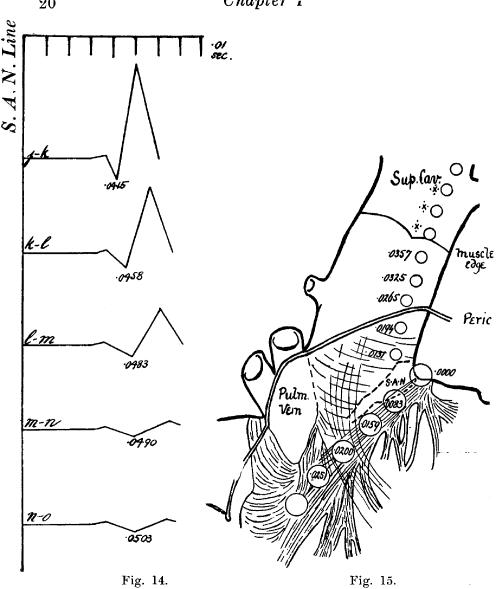Abstract
In 1839, Jan Evangelista Purkinje discovered a net of gelatinous fibres in the subendocardium of the heart. Walter Gaskell in the 1880s observed that the impulse of the heart began in the sinus venosus, and that this region had the most rhythmic ability. A conducting bundle between the atrium and the ventricle was found by Wilhelm His, Jr in 1893. In 1906, Sunao Tawara found a “complex knoten” of tissue at the proximal end of the His bundle. He concluded that this was the inception of an electrical conducting system which continued from the AV node through the bundle of His, divided into the bundle branches, and terminated as the Purkinje fibres. The collaboration of Arthur Keith and Martin Flack led to discovery of the sinus node, finalising the discovery of the electrical system of the heart and providing an anatomical answer to the baffling mystery: “Why does the heart beat?”
Keywords: sinus node, Keith, Flack, electrical
“There is a remarkable remnant of primitive fibres persisting at the sino‐auricular junction in all the mammalian hearts examined… in them the dominating rhythm of the heart is believed to normally arise.” Arthur Keith and Martin Flack1
On a hot summer day in 1906, Martin Flack, a medical student, was studying microscopic sections of the heart of a mole while Arthur Keith and his wife were bicycling through the beautiful cherry orchards near their cottage in Kent (figs 1 and 2). Upon their return, Flack excitedly showed Keith a “wonderful structure he had discovered in the right auricle of the mole, just where the superior vena cava enters that chamber.”1 Keith quickly realised that this structure closely resembled the atrioventricular node as described by Sunao Tawara earlier that year.2 Further anatomical studies confirmed the same structure in other hearts, which they named “the sino‐auricular node.” The long sought‐after site of origin of the heartbeat had finally been discovered.3,4,5,6
Figure 1 Arthur Keith. Reproduced with permission from the Wellcome Library, London.
Figure 2 Martin Flack. Reproduced with permission from the Wellcome Library, London.
The myogenic versus the neurogenic controversy
The mysterious beating of the heart, which Claudius Galen in the second century showed would continue even when the heart was excised, was long a matter of intense speculation. Physiologists divided into two camps: one side believing that the heart muscle itself provided the stimulus while the other asserted that external nerves or local ganglions were in charge. This heated debate—known as the myogenic versus the neurogenic controversy—was eventually resolved by the discovery of the electrical system of the heart.3,4,5,6,7
The Purkinje fibres
In 1839, Jan Evangelista Purkinje (1787–1869), a Czech physiologist, discovered a net of gray, flat and gelatinous fibres in the subendocardium of the heart. He did not understand their purpose, initially considering them to be cartilaginous.6,8
The site of impulse formation
Walter Gaskell (1847–1914), a physiologist at Cambridge University, was one of the first to understand impulse formation and the peristaltic movement of heart muscle contraction.9 He observed that the impulse of the heart began in the sinus venosus, which had the most rhythmic ability, and then spread through the atrium downwards through the ventricle.9 The impulse was delayed at the junction of the atrium and ventricle, a pause which he attributed to undifferentiated embryonic muscular tissue. Gaskell believed that cardiac conduction was through muscular tissue, not nerves.9,10
A connecting bundle between the atrium and the ventricle
A conducting bundle between the atrium and the ventricle was found by Wilhelm His, Jr (1863–1934) at the University of Leipzig. His, Jr was prompted by Gaskell's work to study how the impulse travelled from the atrium to the ventricle. By examining different stages of embryological development, he discovered a connective tissue sheet which formed a bundle uniting the upper and lower cardiac chambers (1893). His, Jr thought that the bundle connected directly to ventricular muscle and did not prove that it actually conducted the impulse.11,12,13 After his discovery, physiologists assumed that the base of the ventricle was stimulated to contract first.
The atrioventricular node and the concept of an electrical system of the heart
In 1906, Sunao Tawara (1873–1952), a young Japanese anatomist working under Ludwig Aschoff in Marburg, Germany, published The Conduction System of the Mammalian Heart, describing his 3‐year long histological search.2 Tawara found a “complex knoten” (the atrioventricular (AV) node) of tissue at the proximal end of the His bundle. He concluded that this was the inception of an electrical conducting system which continued from the AV node through the bundle of His, divided into the right and left bundle branches, and terminated as the Purkinje fibres. Tawara was the first to appreciate that Purkinje fibres were conducting tissue which rapidly delivered the impulse to the ventricular apex so that contraction would spread from apex to base.2,14
Association of Arthur Keith with James Mackenzie
At that time, Arthur Keith was a demonstrator of anatomy at the London Hospital, and he was interested in the functional anatomy of the cardiac musculature.15 In 1903, Keith read an article by James Mackenzie, then a general practitioner in Burnley, England, describing his new polygraphic technique for recording jugular and arterial pulses. Keith realised that Mackenzie's instrument might further his research. He wrote to Mackenzie, who responded, “You are the man I have been looking for; I have hearts which I observed in patients over a long series of years and now I want some one to examine them. Will you do it?”16 Keith accepted the invitation and turned his attention to the pathological correlation of the arrhythmias recorded by Mackenzie's polygraph. In July 1905, Mackenzie sent Keith the heart of a patient who had a marked disturbance of the “auriculo‐ventricular rhythm,” and requested that Keith examine the auriculo‐ventricular bundle described by His, Jr. As an aid, he sent Keith an article by HE Hering, a Prague physiologist, who described the anatomy of the bundle of His. On 15 January 1906, with exasperation, Keith wrote to Mackenzie “…I have given up the search for His' bundle—having come to the conclusion that there is not and never was any such thing.” In a letter dated 4 February, he firmly asserted “that Nature has put itself to a great trouble to make certain that there will be no muscular connection between the auricular and ventricular parts of the heart.” Mackenzie then sent Keith an article by Ludwig Aschoff, published 26 September 1905, which described Tawara's work. With this as his guide, Keith was able to confirm the existence of Tawara's system. He wrote to Mackenzie, admitting humble pie, and saying “I must be a duffer not to have seen it before—let alone question its existence.”15,16
The sino‐auricular node
In 1903, Keith rented a cottage near Bredgar, Kent (fig 3). In due course, Keith made the acquaintance of Mr Flack, a grocer, whose 20‐year‐old son, Martin, an Oxford graduate, was interested in medical school.17 Later, Keith described Flack as “a most attractive personality, fair haired, clean skinned, bright‐eyed, short and sturdy—my ideal of a Saxon youth; merry, ever ready for work or play; as true and lovable a man as I have met.” Keith advised Flack to come to the London Hospital, and there they began studies which confirmed the work of Tawara.18
Figure 3 Exterior of Manns Place, 2006.
This study led them to examine other regions of the heart for similar “peculiar musculature” at Keith's cottage during the summer vacation of 1906. A study was turned into a laboratory to study the hearts of trapped moles, rats, mice, and hedgehogs. Keith had already observed that the contraction wave of the heart was initiated in the sinus venosus region. Crediting others whose discoveries had directed their search, they reported Flack's discovery as “…a remarkable remnant of primitive fibres persisting at the sino‐auricular junction in all the mammalian hearts examined. These fibres are in close connection with the vagus and sympathetic nerves, and have a special arterial supply.” These fibres were “striated, fusiform, with well‐marked elongated nuclei, plexiform in arrangement, and embedded in densely packed connective tissue—in fact of closely similar structure to the Knoten” [of Tawara]. From this evidence, they inferred “… in them the dominating rhythm of the heart is believed to normally arise.” Their landmark study, published 100 years ago, completed the electrical system of the heart and provided the anatomical answer to the baffling mystery: Why does the heart beat?1,6
Confirmation of the sinus node
In 1908, James Mackenzie, then aged 54 and recently arrived in London, became acquainted with Thomas Lewis who had worked in EH Starling's physiology laboratory.19 Although only 26, the young Welshman was already the author of seven papers, including polygraphic research on the pulse and blood pressure. This introductory meeting of Mackenzie, now recognised as the father of British cardiology, and Lewis, the future great clinical scientist, would have profound consequences. Mackenzie encouraged Lewis to study cardiac arrhythmias and also to found a journal for research—now known as Heart.
In 1901, the string galvanometer technique of electrocardiography had been invented by Willem Einthoven in Leiden. Lewis installed an early electrocardiogram in a cellar of the University College Hospital and visited Einthoven in 1909. Beginning in 1909, using a twin string galvanometer, Lewis recorded two sites simultaneously from the surface of dog hearts, making precise comparisons of the arrival of the excitation wave at different points.20,21 Lewis identified the sino‐auricular node as being the pacemaker of the heart by two innovative approaches. First, he stimulated the superior vena cava (SVC), the coronary sinus, and the left auricular appendix and showed that only the curves from the SVC, that is to say near the sinoatrial (SA) node, were identical with the normal rhythm.20 Second, it was known that the point at which the contraction starts becomes electrically negative to the inactive points of muscle. Lewis placed one electrode on the sulcus terminalis, being near the area of the SA node, with the other bipolar electrode placed at outlying regions of the heart such as the pulmonary vein or the SVC.21 (fig 4) The electrode over the SA node invariably had a primary negativity indicating, “The SA nodal region is that in which the excitation wave has its birth”20 (fig 4).
Figure 4 Schematic diagram by Thomas Lewis showing curves obtained in leads relative to the sinus node (circled).20
Cooling and warming the sinus node to study heart rate response, by G Ganter and others, also pointed to the location and primary function of the sino‐auricular node.22,23 When Einthoven was awarded the Nobel Prize in 1924, he generously referred to Thomas Lewis, saying “I doubt whether without his valuable contributions I should have the privilege of standing before you today.”24
Subsequent careers of Martin Flack and Arthur Keith
Martin Flack became a demonstrator of physiology at the London Hospital, conducting research on respiratory physiology and graduating in 1908. A Radcliffe fellowship enabled him to spend time in Bern and Lüttich, Belgium. Flack returned to the London as a demonstrator of anatomy (1905–11) and then lecturer in physiology (1911–4). He coauthored A Textbook of Physiology with Leonard Hill in 1909, and in 1910 he published a series of experiments testing the response of the sinus node to temperature alteration, mechanical stimulation and drugs. During the first world war, he served on the Medical Research Council, and in 1919 Flack was appointed director of medical research for the Royal Air Force. His contributions included the use of oxygen by pilots at high altitudes, and the testing of their physical fitness. He died from endocarditis in 1931.25
In 1908, Arthur Keith was chosen to be the conservator of the Hunterian Museum of the Royal College of Surgeons, holding this position with scholarly distinction until 1933. His book Human Embryology and Morphology went through six editions between 1901 and 1948. Keith became a leader in the study of human evolution and palaeontology. His many articles and classic books, including The Antiquity of Man (1915), as well as books popularising his interests for the public, and his frequent talks and demonstrations, brought him international fame and many honours. He was elected FRS in 1913, knighted in 1921, and elected rector of Aberdeen University in 1930. His final years were spent as master at the Buckston Browne Research Institute in Downe, not far from the ancestral home of Charles Darwin, where he continued to work and write productively right up until his death at age 88 in 1955.15,25
From Keith's precise directions in his autobiography, we were able to locate “Mann's Place”, the cottage in Kent where the sinus node was discovered. Mr Beverley Willis is the current owner, and he kindly provided us with the photograph (fig 3), and gave much help in the search for historical material. We appreciate the librarians at the Saul's Memorial Library at Piedmont Hospital. Dr Charles B Upshaw Jr offered helpful criticism.
Abbreviations
SA - sinoatrial
SVC - superior vena cava
Footnotes
Conflict of interest: None.
References
- 1.Keith A, Flack M. The form and nature of the muscular connections between the primary divisions of the vertebrate heart. J Anat Physiol 190741172–189. [PMC free article] [PubMed] [Google Scholar]
- 2.Tawara S.Das Reizleitungssystem Des Säugetierherzens (The conduction system of the mammalian heart) Jena: Gustav Fischer, 1906. (Translated into English by Kozo Suma and Munehiro Shimada and published by Imperial College Press, London, 2000.)
- 3.Martin E G. The rise of the present conceptions as to the cause of the heart‐beat. 1. Early ideas, and the neurogenic theory. Johns Hopkins Hosp Bull 190516338–345. [Google Scholar]
- 4.Acierno L J.The history of cardiology. London: The Parthenon Publishing Group, 1994247–336.
- 5.Fye W B. The origin of the heart beat: a tale of frogs, jellyfish, and turtles. Circulation 198776493–500. [DOI] [PubMed] [Google Scholar]
- 6.Silverman M E, Grove D, Upshaw C B., Jr Why does the heart beat? The discovery of the electrical system of the heart. Circulation 20061132225–2281. [DOI] [PubMed] [Google Scholar]
- 7.Siegel R E.Galen's system of physiology and medicine. New York: S Karger, 196845
- 8.Schweitzer P. Jan Evangelista Purkinje. Clin Cardiol 19911485–86. [DOI] [PubMed] [Google Scholar]
- 9.Silverman M E, Upshaw C B., Jr Walter Gaskell and the understanding of atrioventricular block. J Am Coll Cardiol 2002391574–1580. [DOI] [PubMed] [Google Scholar]
- 10.Gaskell W H. On the innervation of the heart, with special reference to the heart of the tortoise. J Physiol 1883443–127. [DOI] [PMC free article] [PubMed] [Google Scholar]
- 11.His W., Jr The story of the atrioventricular bundle with remarks concerning embryonic heart activity. J Hist Med Allied Sci 19494319–333. [DOI] [PubMed] [Google Scholar]
- 12.Bast T H, Gardner W D. Wilhelm His Jr and the bundle of His. J Hist Med Allied Sci 19494170–187. [Google Scholar]
- 13.His W., Jr Die Thätigkeit des embryonalen Herzens und deren Bedeutung für die Lehre von der Herzbewegung beim Erwachsenen. (The function of the embryonic heart and its significance in the interpretation of the heart action in the adult.) Arbeiten aus der med Klin zu Leipzig. 1893: 14–50, (Translation from Willius FA, Keys TE. Wilhelm His, Jr. In: Classics of cardiology. Vol.2, New York: Dover Publications 1941695
- 14.Suma K. Sunao Tawara: a father of modern cardiology. Pace 20012488–96. [DOI] [PubMed] [Google Scholar]
- 15.Keith A.An autobiography. New York: Philosophical Library, 1950
- 16.Mair A.Sir James Mackenzie MD (1853–1925) general practitioner. London: The Royal College of General Practitioners, 1986, 127–9, 203, 212–7
- 17.Keith A. The sino‐auricular node: a historical note. Br Heart J 19424477–79. [DOI] [PMC free article] [PubMed] [Google Scholar]
- 18.Keith A, Flack M W. The auriculo‐ventricular bundle of the human heart. Lancet 1906ii359–364. [DOI] [PMC free article] [PubMed] [Google Scholar]
- 19.Hollman A.Sir Thomas Lewis, pioneer cardiologist and clinical scientist. London: Springer Ltd, 199745
- 20.Lewis T.Lectures on the heart. New York: Paul B Hoeber, 191511–12.
- 21.Lewis T.The mechanism and graphic registration of the heart beat. 3rd ed. London: Shaw and Sons, 192563–69.
- 22.Ganter G, Zahn A. Quoted by Lewis T. The mechanism and graphic registration of the heart beat. 3rd ed. London: Shaw and Sons, 192570
- 23.Eyster J A E, Meek W J. The origin and conduction of the heart beat. Physiol Rev 192111–43. [Google Scholar]
- 24.Snellen H A.Two pioneers of electrocardiography. Rotterdam: Donker Academic Publications, 1983122
- 25.Willius F A, Keys T E.Sir Arthur Keith and Martin William Flack. Classics of cardiology. New York: Dover Publications, 1941743–746.






